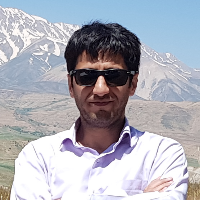Monitoring and Modeling of the Concentration and Quality Index of Dust Particles in the Air of Gorgan City in 1396
Author(s):
Article Type:
Research/Original Article (بدون رتبه معتبر)
Abstract:
Introduction and purpose
Previous epidemiological studies suggested a close correlation between suspended particles and the prevalence of respiratory diseases, cardiovascular problems, cancer, and mortality. Moreover, it was reported that the city space contains pollutions of motionless and moving sources. Therefore, the aim of this study was to determine the concentration and release status of PM10 and PM2.5 particles in the air of Gorgan, Iran in 2016-2017 and to provide effective solutions.
Methods
In this descriptive cross-sectional study, the concentration of air pollutants in Gorgan was measured at eight stations in different parts of the city for one year during July 2016-June 2017. Afterwards, the results of monthly PM2.5 and PM10 measurements by the portable device were modeled following the calculation of the quality index and estimation of their effect on health in the Geographic Information System using the Air Quality Index (AQI) Calculator software. In addition, the measurements were compared with national and international standard values. Furthermore, solutions were provided for reducing pollution.
Results
Our findings demonstrated that the highest amount of PM2.5 and PM10 were recorded in December (116 and 76 μg/m3) and the lowest was in April (40 and 34 μg/m3). The results of one-way analysis of variance revealed a significant difference in the mean concentrations of the two particles between months. According to the results of this study, air inversion in cold seasons was effective in the concentration of these pollutants. The annual mean of PM10 and PM2.5 was reported as 41 and 30 μg/m3, respectively. The latter means were lower and higher than the EPA standards of 50 and 12 μg/m3, respectively.
Conclusion
The results of the current investigation showed that the highest AQI was related to PM2.5 in the central regions of the city, Municipality Square, and Mazandaran Square. In addition, the highest PM10 pollution was measured in the central and southern parts of the city. This could be attributed to the high density of cars, which is the most important factor in the production of particles in cities.Keywords:
Language:
Persian
Published:
Journal of Health Research in Community, Volume:5 Issue: 1, 2019
Pages:
79 to 94
https://www.magiran.com/p2022585
سامانه نویسندگان
مقالات دیگری از این نویسنده (گان)
-
Evaluation of Lead Removal from Aqueous Solutions with Nano-Composite of Layered Double Hydroxides Coated on Magnetic Activated Carbon
Hadi Dadashi, Banafsheh Norouzi, Yousef Dadban-Shahamat, Mohamadhadi Mehdinejad*
Journal of Health System Research, -
The effect of Juybar landfill on physicochemical parameters and heavy metals in groundwater resources
Yosof Dadban Shahamat, Zohreh Moghiseh*, Gholamreza Jamali Atargole, Mina Gharchi
Koomesh, -
Modeling for Weighting the Most Effective Evaluated Criteria of Indigenous Knowledge Using the BWM Method in the Management and Planning of Water Resources in Yazd Province
M. Khani *, H. Hoveidi, A. R. Yavari, M. R. Khani
Journal of Water and Sustainable Development, -
Investigation of the Benzene Concentration and Distribution in Tehran Using Geographic Information System Modelling
MohammadReza Khani, Mina Ghahrchi, Edris Bazrafshan, *
Journal of Health Research in Community,



